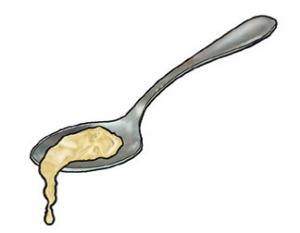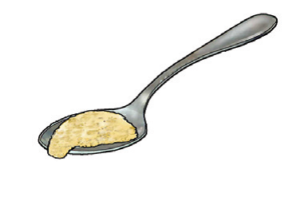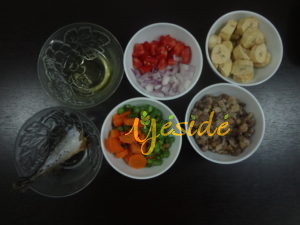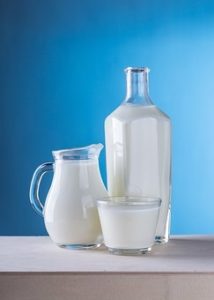
Did you know that only about 10% of Nigerian children are fed according to the recommended infant and young child feeding practices? Did you also know that children in the South East and South South are fed a little better than in other zones in Nigeria? Sadly, child malnutrition rate is high all over Nigeria and we need to reduce it. This article identifies different ways that children are not well fed in Nigeria.
The best meal a baby can have in the first 6 months of life is the breast milk. The breast milk contains what your baby needs to nourish and thrive. The breast milk is enough for a baby before 6 months. It contains enough water, carbohydrates, protein, fat, vitamins, minerals, After 6 months, your baby would need more energy and other nutrients from other foods to complement the breast milk.
Sometimes, during the transition from a totally liquid diet to a liquid and semi-solid diet, errors can be made. I have highlighted about 5 ways infants may not get enough nutrients after 6 months.
- Giving Lots of Water (especially when it is meal time)

An infant’s stomach is very small. It is even smaller than the size of a cup (a cup is about 250mls). Having a small stomach means your infant can only eat a little at a time and more frequently. If you are giving your infant a lot of water especially before his/her meals, then the water will likely take the space meant for food. By doing this you are reducing the volume of nutrients the child should be receiving. Your child should be hydrated but not at the expense of her nutrients.
This link will give you more information about portion sizes and frequency of meals for your infant.
- Giving Watery Pap or Porridges

Credit: Nigeria Community IYCF Counselling Cards

Credit: Nigeria Community IYCF Counselling Cards
Pap is one of the go-to-meals for infants once they turn 6 months. When prepared correctly, they can contribute to the energy and other nutrient needs that your infant requires.
Pap or porridge made watery increases the volume of the food but decrease energy and other nutrient content of that food. Infants need a small volume of foods that are dense with energy and other nutrients like vitamins and minerals. A way to make your Pap better is to prepare thick pap by reducing the amount of water used or adding some oil to increase energy content. This link will give you more information about the texture of foods for your infants after 6 months.
- Serving Same Types of Meal everyday

Bottom left: Fish, carrots, green beans, green peas, and boiled beans
You know the saying “variety is the spice of life?” Well, variety is the secret to more nutrients for your infants. If you are serving your infant Pap with milk every day, there is a greater chance that your infant would not have access to more nutrients especially vitamins and minerals. There are many classes of foods such as fish, eggs, meats, starchy roots and tubers like potatoes; vegetables, and fruits that your infants should be eating. Example, if you give your child, liver, fish, and different varieties of protein, iron levels of your child will increase as opposed to just giving fish alone (except other food components contain more iron). If you cannot achieve this at all, give foods that have been fortified with minerals and vitamins or you ensure that they have nutrient supplements.
Click her for more on how to prepare a variety of meals for your infant.
- Stopping Milk After 6 Months

For some mothers, when its 6 months they stop giving their infants breast milk for different reasons. Since the child is now on semi-solids, there is the tendency to reduce the amount of milk given. However, it is important to note here that milk is an essential part of an infants diet. You need to continue giving milk even when he/she becomes a toddler.
- Not Giving High Quality Meals

High quality meals here does not refer to expensive food. It just means that the quality of the nutrients is high enough to meet the infant or toddler’s needs. For example, not all proteins are equal in quality. Breast milk, eggs, and other animal foods contain a higher quality of protein than plant foods. Also, when you combine so plant foods such as grains (rice) and legumes (beans), the quality of protein is improved. Just giving paps made of corn and other grains alone is not enough.
- Giving Fruits and Vegetables Once A While

Sometimes, it can be hard to incorporate fruits and vegetables into your infant’s meals especially when you do not eat them yourself. For infants and toddlers, do not compromise. Micronutrient deficiencies are detrimental at the age and can cause irreversible damage to their brain especially with regards to their ability to learn and think effectively.
Do your best to give fruits and vegetables every day. Here is a link on how to incorporate fruits and vegetables into meals.
In addition, it is commendable work to care for an infant and do so successfully. If your infant is a fussy one, do what you can to ensure that your infant takes enough nutrients. There are creative ways to do this. If you baby is not feeling well or has low appetite, you might want to take the child for malnutrition screening and have the issues addressed.
To rap this up, give a variety of meals to your infants and toddlers, ensure that their meals which are small in quantity are dense with high quality nutrients. Ensure that your infant is hydrated but not at the expense of his/her nutrients. Lastly, give fruits and vegetables every day.
Your infants, toddlers and older children deserve to eat better and live better.


